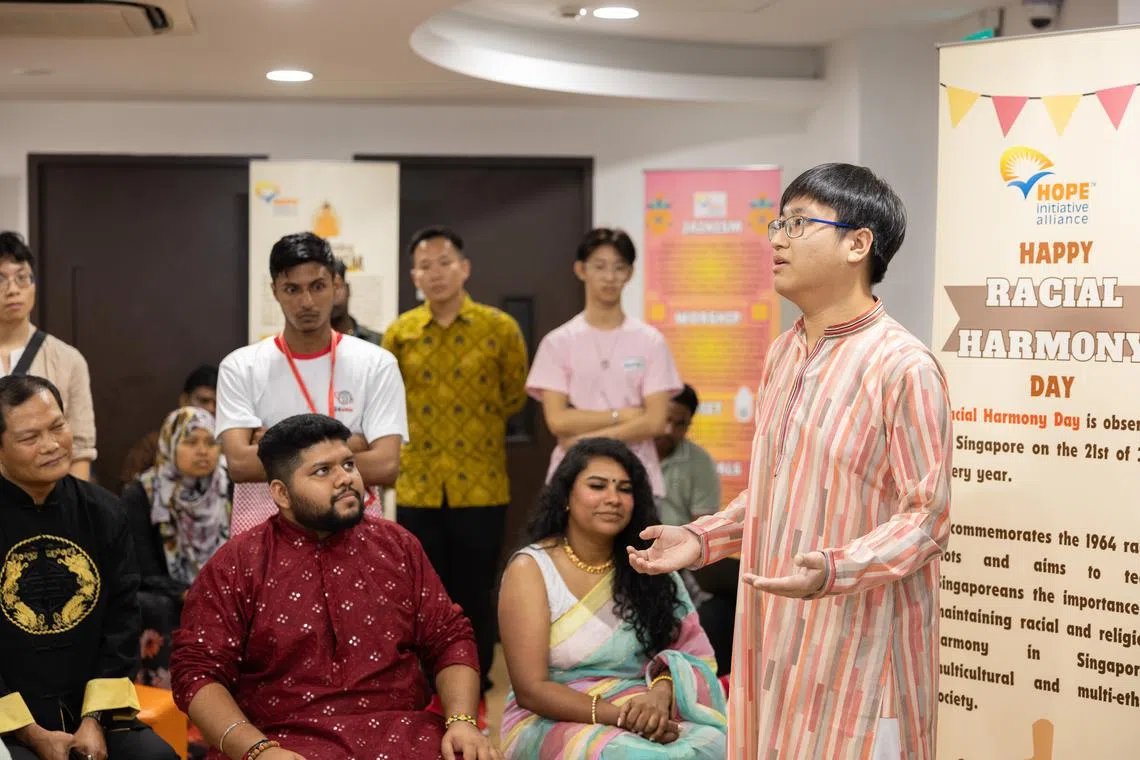Sharing of cultures as migrant workers and S’poreans mark Racial Harmony Day
Sign up now: Get ST's newsletters delivered to your inbox
Follow topic:
SINGAPORE – In Hindu culture, a baby is named at a ceremony 16 days after he or she is born – a tradition that is significant to Indian national Anandha Pradeep.
The 33-year-old, an engineer at offshore and marine firm Seatrium, took the opportunity to share this unique tradition with others, including Singaporeans, at the first Racial Harmony Day celebration organised by the Ministry of Manpower (MOM) for migrant workers.
During an interfaith dialogue at the event on July 21, participants delved into beliefs, rituals and life stages across various cultures.
Speaking to The Straits Times at Sembawang Recreation Centre, where the event was held, Mr Anandha said: “Usually I don’t have much opportunity to speak with locals. This event was a good opportunity for me to interact with them.”
Over 1,200 migrant workers attended the event, organised by MOM’s Assurance, Care and Engagement (ACE) Group and the Alliance of Guest Workers Outreach – a movement of Hope Initiative Alliance, an inter-racial and inter-religious platform for social service organisations.
It was also supported by 24asia, a volunteer group led by migrant workers in Singapore, and other community partners.
Among the participants were 200 students from Dunman High School, Millennia Institute, Eunoia Junior College and National Junior College, and youth from the Indian Muslim Social Service Association and the Singapore Indian Development Association Youth Club.
The event featured several cultural performances from countries like India, Bangladesh, Indonesia, Vietnam and the Philippines. There was a kabaddi – an ancient Indian sport – competition and a display of ethnic outfits worn by both locals and migrant workers.
ACE chief Tung Yui Fai said the first of two objectives of the event was to help the migrant workers understand what it is like living in Singapore. “The other objective is to allow our community, including our Singaporeans and other people living in Singapore, to also appreciate our migrant workers – who they are, what their preferences are,” he added.
“Through this sharing and through this coming together, we hope that we can build a more harmonious society, a more harmonious place for our migrant workers to work in.”
Mr Clement Goh, 22, a student from Millennia Institute and the president of its Service-Learning Club, shared his Buddhist religion with the migrant workers.
Through the dialogue, he said he learnt that there are many similarities between his faith and those of the Muslim and Hindu religions. One example is the celebration of the success of the fight against evil.

Millennia Institute student Clement Goh speaking during the Hope Alliance Initiative Interfaith Dialogue on July 21.
ST PHOTO: BRIAN TEO
Mr Goh hopes that more of such events can be held to involve more Singaporeans. “If we do not know about the migrant workers – their beliefs, attitudes – we will not be able to understand them,” he said.


